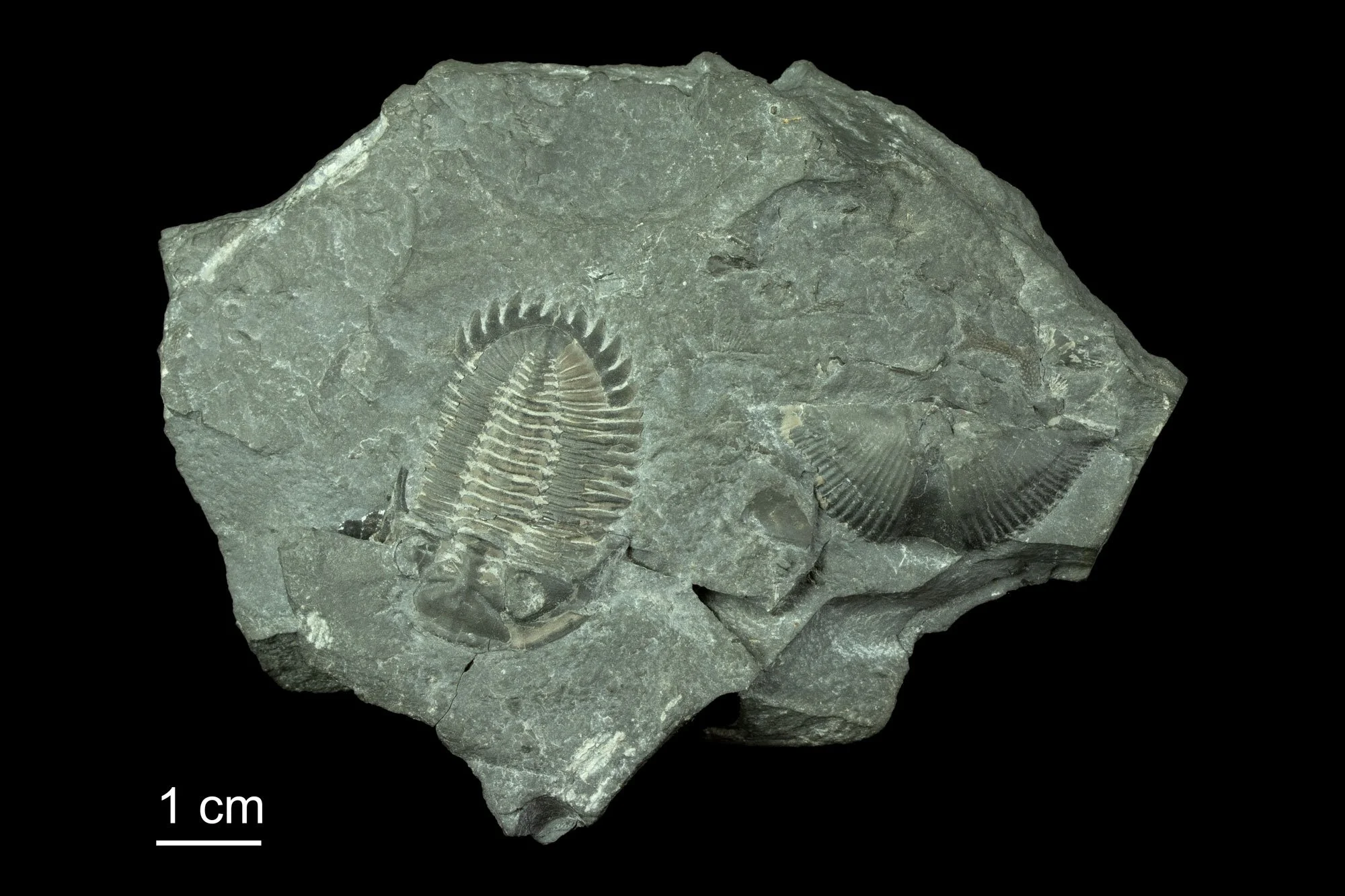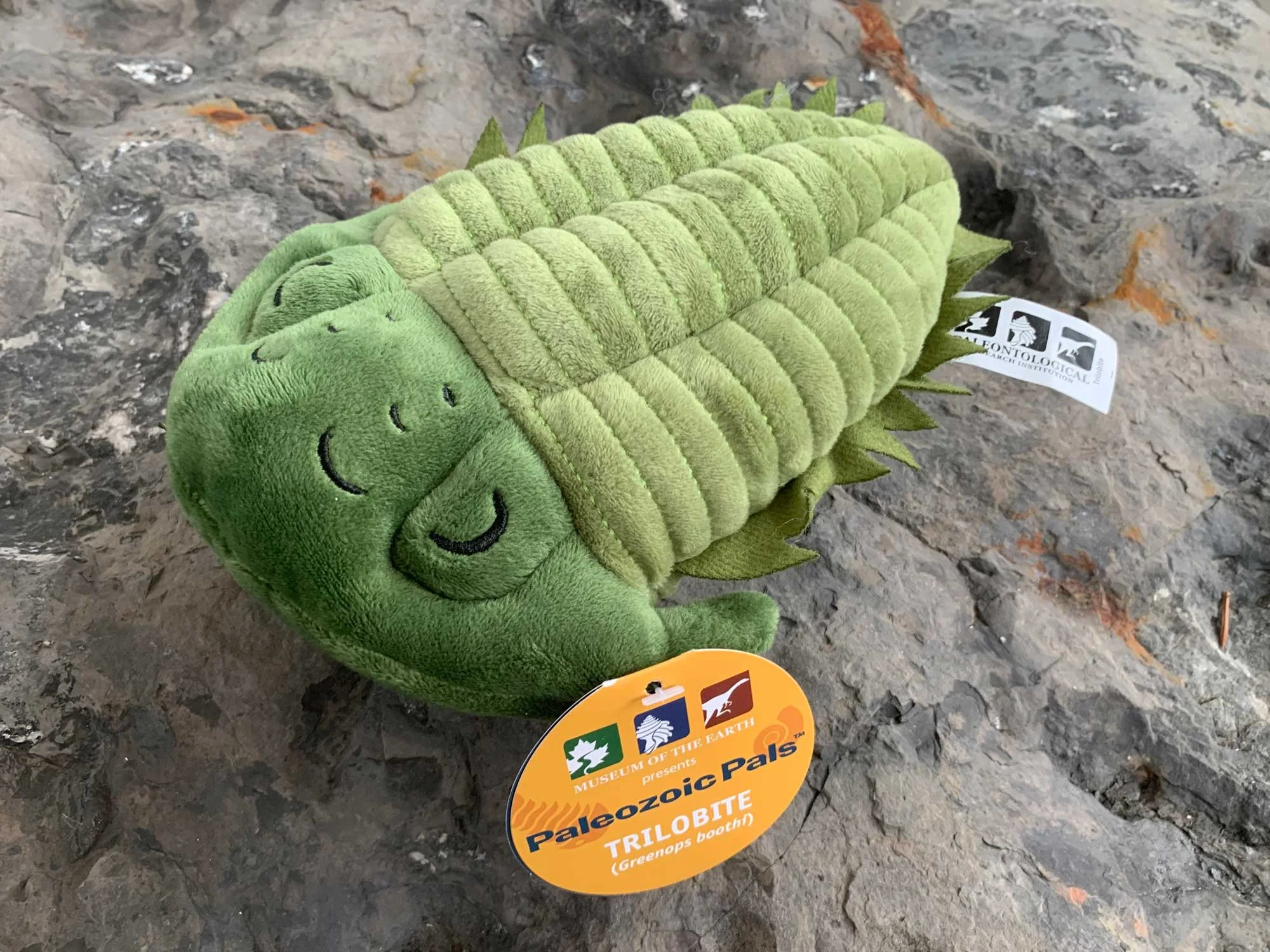Trilobites
Trilobites
Trilobites are extinct arthropods, the animal group that today includes insects, centipedes, crustaceans, spiders, scorpions, and more. All trilobites lived in the ocean. Most crawled on the seafloor, but others swam. Many ate organic matter in the mud, but some were probably predators of worms and other small animals. Some lived in deep water, while others lived near the shore.
Trilobite bodies were divided into three main parts: the head (cephalon), middle (thorax), and tail (pygidium). However, this is not where their name comes from! “Tri-lob-ite” refers to the fact that their thorax is divided into three separate lobes; trilobites are the only arthropods that show this feature. Trilobites are some of the first animals to show evidence of eyes in the fossil record. Their compound eyes were divided into many individual lenses, much like a fly’s eye.
Greenops boothi from the Moscow Formation, Tompkins County, New York (PRI 83729). Image on the right shows the different body parts of this trilobite: cephalon (head), thorax (middle), and pygidium (tail). Note that the thorax shows three parts (trilobation).
The eye of the Devonian trilobite Eldredgeops rana, including a zoomed-in view. Scale bars equal 1 mm.
Over 20,000 trilobite species have been described by paleontologists, making them one of the most diverse groups of extinct animals. This great diversity is reflected in the many different shapes and sizes of trilobites, which ranged from smooth to spiny, and from less than an inch to more than two feet long. The fossil record of trilobites begins early in the Cambrian Period. They were especially diverse early in the Paleozoic, but the number of species declined rapidly after the Devonian Period. No trilobites survived the end-Permian Mass Extinction event 252 million years ago.
New York has one of the best fossil records of trilobites in the world and over 300 different species have been found in Cambrian- to Devonian-aged rocks in the state. Like all living arthropods, trilobites had to molt, or shed, their exoskeleton to grow. These molted pieces— cephalons, pygidiums, or pygidiums connected to middle thorax segments—are commonly encountered fossils in Middle Devonian-aged rocks in New York. Each individual trilobite likely left behind numerous molts during its lifetime. Complete trilobite fossils with all of the parts preserved usually represents the actual body of the animal at the time of its death.
Terataspis grandis
Terataspis grandis from the Devonian of New York is one of the largest known species of trilobites. Unfortunately, no complete specimens are known. Its strange spiny body form is revealed in fragmentary fossils such as the fossils shown here. The exoskeleton of Terataspis is very thin, so it is likely that the spines did not defend the trilobite against actual attacks by predators. Instead, the spines may have simply discouraged predators from attempting to attack it.
Left: Life-size model of Terataspis grandis. Upper Right: Terataspis grandis partial cephalon (head), Schoharie Grit, Early Devonian, Schoharie, New York; on loan from the New York State Museum (NYSM E974). Lower Right: Terataspis grandis partial pygidium (tail) and thorasic segments, Onondaga Limestone, Early Devonian, Erie County, New York (PRI 104028).
Examples of Devonian trilobites from New York
Bring Greenops home!
Greenops boothi is a trilobite found in the Devonian Period marine rocks of Central and Western New York. Our version is playfully colored green, but in fact Greenops is named after the 19th century paleontologist Jacob Green.


















